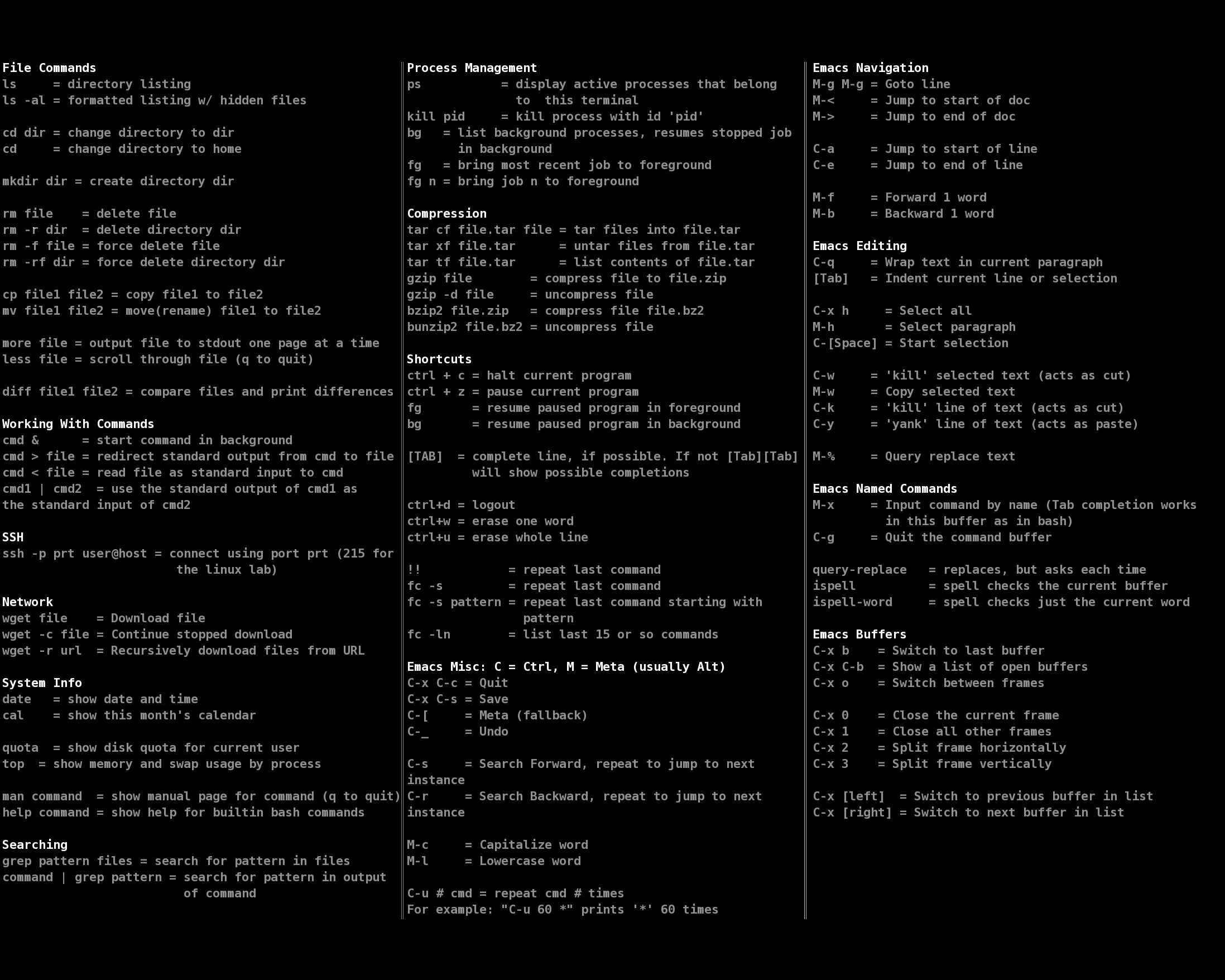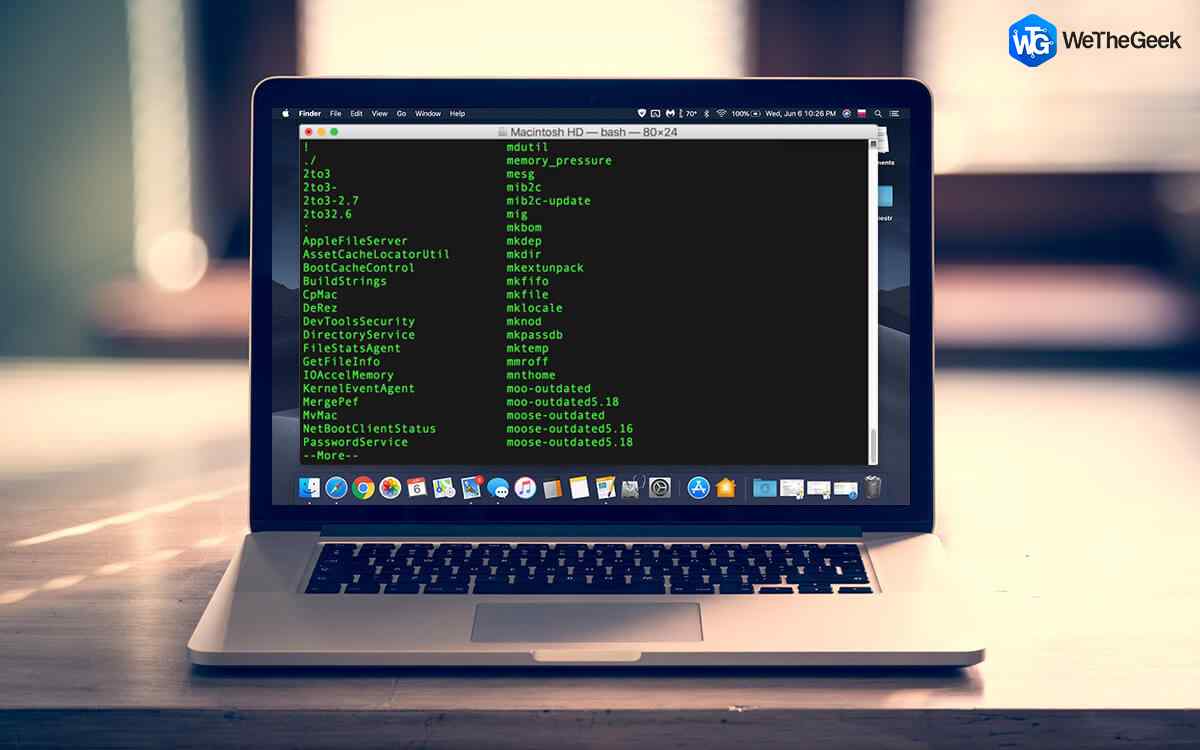

List the file names with size, owner, and flags Long listing with human readable file sizes in KB, MB, or GB List the files sorted by time modified (most recent first) List of the file system from root with symbolic links Includes file mode, owner and group name, date and time file was modified, pathname, and more Output the list of files in one entry per line formatĭisplay a / (slash) immediately after each path that is a directory, * (asterisk) after executable programs or scripts, and after a symbolic link Previous directory or folder you last browsedĭisplay the name of files and subdirectories in the directory Run command with the security privileges of the super user Puts whatever you're running into a suspended background process Paste whatever was cut by the last command Swap the last two words before the cursor Swap the last two characters before the cursor Go to the end of the line you're currently typing on Go to the beginning of the line you're currently typing on The Mac Terminal Commands Cheat Sheet COMMAND
Command line mac cheat sheet download#
Download the Mac Terminal Commands Cheat Sheet. You will have to complete a short form to access it for the first time only.
Command line mac cheat sheet pdf#
Then you can get started with some of the powerful commands below.įREE DOWNLOAD: This cheat sheet is available as a downloadable PDF from our distribution partner, TradePub. Launch the Terminal app from Applications > Utilities or search for it via Spotlight. We're here to help with a detailed cheat sheet of Mac Terminal commands you can use to unlock enhanced productivity on your system. With so many Mac commands, it's often difficult to remember and use them all.

It gives you more power and control over your system. Setting up a cron job will handle this automatically. You can manage files, folders, and file archives in an automated manner. They're way more powerful than Spotlight. When you're having difficulty searching for files in Spotlight, you can turn to Unix search tools. There are dozens of open source and freely available Unix-based apps. Spotlight search for files (names, content, other metadata), e.g.MacOS is an intuitive operating system, so you don't have to spend lot of time learning the basics Knowing this, why should you learn and take advantage of the Unix command line available on your Mac? We have four good reasons: Search for all lines that contain the case-insensitive pattern

Search for all lines that do NOT contain the pattern Recursively search in all files in specified directory for all lines that contain the pattern Search for all lines that contain the pattern, e.g. Push output to file, keep in mind it will get overwritten Output file content delivered in screensize chunks Remove directory ( only operates on empty directories ) Paste clipboard contents into file, pbpaste > paste-test.txt Print to the console the last command typed Print to the console the last command typed that starts with ‘value’ Interactively search through previously typed commandsĮxecute the last command typed that starts with ‘value’ Shows the stuff typed – add a number to limit the last n items Run command A and then pass the result to command B e.g ps auxwww | grep google Run command A and then B, regardless of success of A Opens a file ( as if you double clicked it )ĭisplays active processes. Run command with the security privileges of the superuser (Super User DO) Long listing with Human readable file sizes Swap the last two words before the cursorĬut one word backwards using none alphabetic characters as delimiters Puts whatever you are running into a suspended background process. Also clears everything on current lineĮxit the current shell when no process is running, or send EOF to a the running process Paste whatever was cut by the last cut command Netbeans being one exceptionĬut everything backwards to beginning of lineĬut one word backwards using white space as delimiter This also works for most text input fields system wide. Go to the end of the line you are currently typing on. Go to the beginning of the line you are currently typing on. Letters are shown capitalized for readability only. Since the translation rely on volunteers, the content between the available languages may vary. This cheatsheet is available in many languages.


 0 kommentar(er)
0 kommentar(er)
